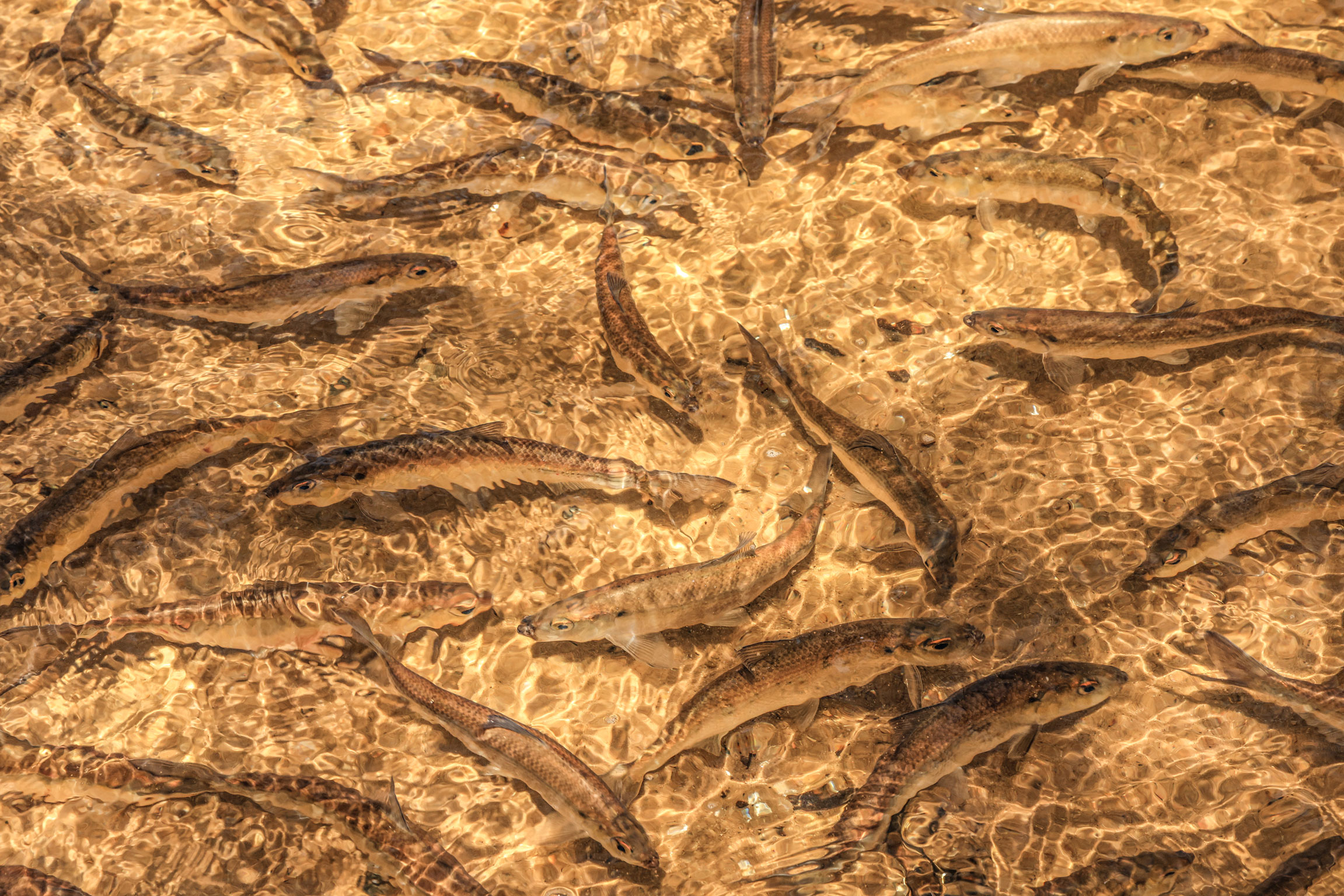The amazing herring migration
Text, Video & Photographs by MARCY FORD
As Cape Cod embraces the arrival of spring, the anticipation of migration fills the air. Bird enthusiasts eagerly await the return of ospreys, songbirds, and shorebirds. Meanwhile, the circling of boisterous herring gulls announces a different spectacle, one that captivates the attention of onlookers along river and stream banks.
From late March through early June, a remarkable journey unfolds as adult alewives and blue-back herring navigate from the vast Atlantic through Cape Cod Bay, Nantucket Sound, Vineyard Sound, Pleasant Bay, and Buzzards Bay. Their destination: freshwater spawning grounds within Cape Cod waterways.
This pilgrimage, however, is fraught with challenges. The arduous trip involves overcoming natural predators and navigating past manmade obstacles. Only a fraction of herring succeed in overcoming these hurdles, with many falling prey to the journey’s perils. Those that endure complete the cycle by returning to the ocean.
Why this massive maneuvering? Herring are an anadromous species, meaning they live primarily in the ocean and migrate to freshwater streams to spawn. Their eggs hatch in about one week, and the young herring grow quickly throughout the summer. Come fall, at about three to four inches in length, the young fish journey back to the ocean, where they grow and mature for up to four years until they are about 12 inches in length. At this point, they are ready to return to fresh water to spawn eggs of their own.

And the gulls proclaimed their coming.
— John Hay
Several easily accessible herring runs offer a front-row seat to witness this awe-inspiring event. Observers marvel at the determination and strength displayed by the fish as they ascend fish ladders against the relentless current, all while contending with hungry gulls, herons, and various riverbed obstacles.
If fortunate enough to visit during peak migration, spectators may witness a breathtaking spectacle of water roiling with fish, some leaping out of the water, their shimmering bodies reflecting the sunlight. Herring also gather in quieter river sections, taking respite and patiently waiting their turn to face the upstream challenge.
River herring play a crucial role in the Cape and Atlantic ecosystems, serving as a vital food source for birds, land mammals, whales, and various fish species. Their significance extends historically to Native Americans in New England and the early settlers who relied on them as a staple food source. Unfortunately, the species faces decline due to overfishing, damming, pollution, bycatch in commercial fishing, and shifts in water temperature.
To safeguard the dwindling population, river herring are classified as a “species of concern” by the National Marine Fisheries Service. Since 2006, their capture has been illegal except by Native Americans. State and local organizations, agencies, and volunteers collect vital data by monitoring herring runs with the goal of restoring these populations and preserving their migratory waterbodies.
Individuals interested in contributing to the herring count can contact Dr. Jo Ann Muramoto, director of science programs at the Association to Preserve Cape Cod (apcc.org) and regional coordinator for Mass Bays Program, via email at jmuramoto@apcc.org.
Some of the most popular Herring Run locations:
Wellfleet: Herring River
Eastham: Bridge Pond and Herring Pond
Brewster: Stony Brook, by the Museum of Natural History
Harwich: Herring River
Chatham: Stillwater Pond
Orleans: Pilgrim Lake
Dennis: Bound Brook and Scargo Lake
Yarmouth: Tom Matthews Pond and Long Pond
Barnstable: Red Lily Pond
Mashpee: Santuit Pond Preserve and Quashnet River
Mashpee: Mashpee River at the Mashpee Wampanoag Museum
Sandwich: Mill Creek and Lower Shawme Lake
Falmouth: Cedar Lake and Coonamessett River
LEARN MORE
John Hay is a local author, naturalist, and co-founder of the Museum of Natural History in Brewster. He wrote 18 books, one of which, The Run, is about Brewster’s Stony Brook Run. This is a must-read for nature lovers and those interested in herring migration.



